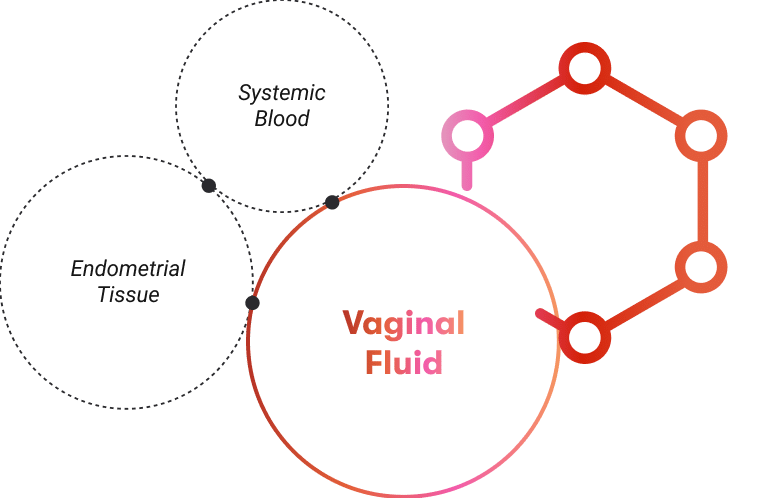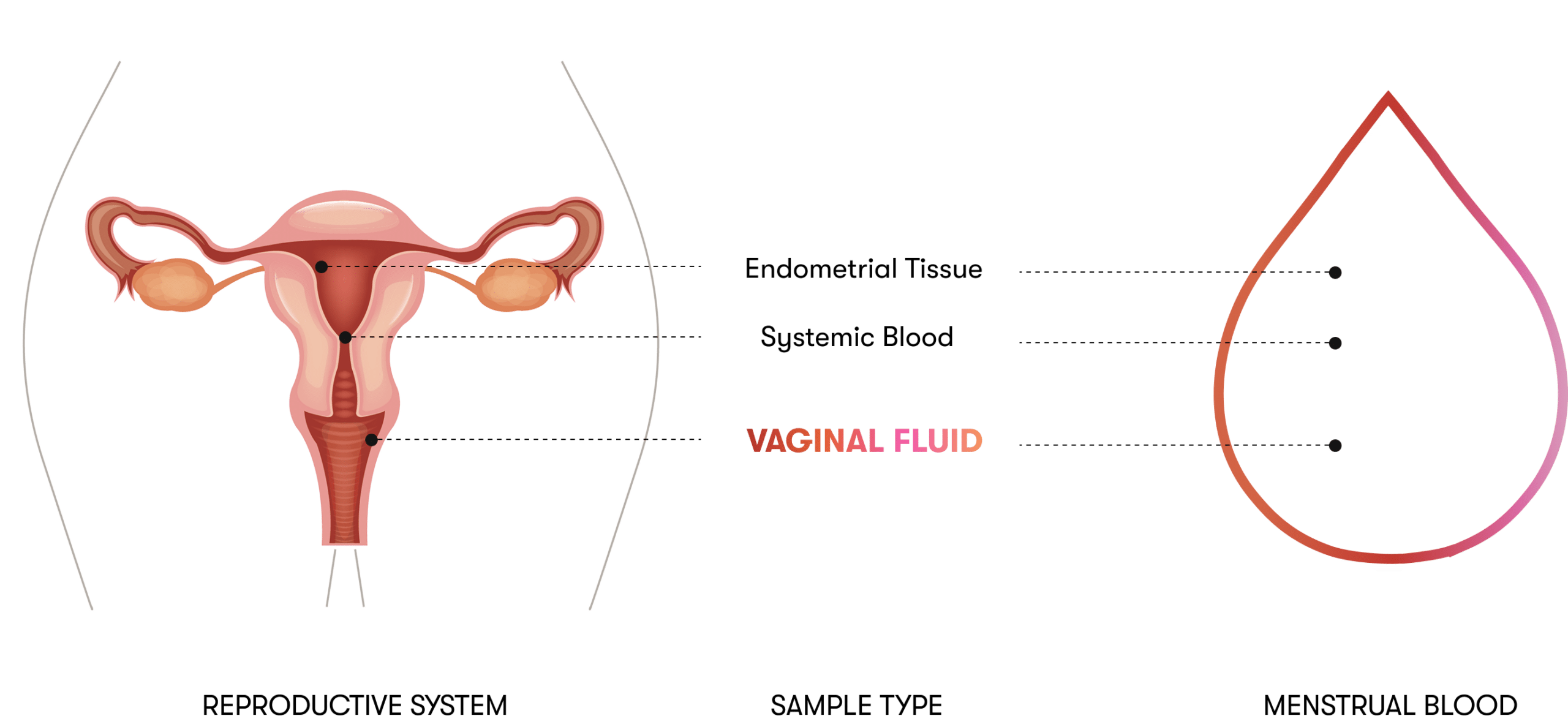DIAGNOSING CONDITIONS
Understanding
Sexually Transmitted
Infections
Sexually transmitted infections (STIs) affect millions annually, yet stigma, lack of awareness, and limited healthcare access leave many undiagnosed. These may include chlamydia, gonorrhea, trichomoniasis, syphilis, human papillomavirus (HPV), herpes simplex virus (HSV), and human immunodeficiency virus (HIV). Without early detection, STIs can lead to serious complications such as infertility, cancer, and pregnancy-related issues, and may also increase vulnerability to other infections.

HOW THE CURRENT SYSTEM IS FAILING WOMEN
Early Detection Is Crucial for STI Treatment
Many STIs don’t show symptoms, so routine testing is critical for early diagnosis. Without timely detection, infections can go unnoticed and lead to serious health problems as well as spread to others.
Menstrual blood has shown promise in being a more accessible and innovative approach to earlier STI detection.
STIs by the Numbers
Curable STIs are acquired every day worldwide in people aged 15–49.
New infections occur annually with 1 of 4 curable STIs: chlamydia, gonorrhea, syphilis, and trichomoniasis.
People aged 15–49 are estimated to have a genital herpes infection.
Qvin Simplifies
STI Screening


Partner with Qvin
THE PROBLEM
Approximately $15.9 billion was spent on lifetime
medical costs for incident STIs in the U.S. alone in 2018.
THE SOLUTION
Qvin makes STI testing accessible, increasing
early detection, reducing costs, and saving lives.

Rationale for the Q-Pad for STIs
Qvin’s Q-Pad, a patented menstrual pad with an integrated Dried Menstrual Sample (DMS) strip, enables accurate, self-collected STI testing by harnessing the diagnostic potential of menstrual blood. Menstrual effluent contains cervical mucus, endometrial cells, and vaginal secretions that can harbor pathogens like Chlamydia trachomatis, Neisseria gonorrhoeae, and Trichomonas vaginalis. Prior studies using tampon-based collection have shown high sensitivity for PCR-based detection—up to 100% for C. trachomatis and improved detection of T. vaginalis compared to urine or swabs [1][2][3][4]. One study found tampon PCR nearly doubled detection rates for T. vaginalis versus conventional methods (15.8% vs. 8.6%) [4]. Building on these findings, Q-Pad offers a discreet, comfortable alternative with proven analytical performance: modified sanitary pads have achieved 93.1% sensitivity and 98.9% specificity for C. trachomatis, with excellent sample stability at room temperature [5]. This makes Q-Pad a scalable, mail-friendly platform ideal for expanding STI screening access across underserved populations.
References
[1] Pilot study of the utility and acceptability of tampon sampling for the diagnosis of Neisseria gonorrhoeae and Chlamydia trachomatis infections by duplex realtime polymerase chain reaction in United Kingdom sex workers, Kimmitt PT et al., International Journal of STD & AIDS, 2010.
[2] Evaluation of patient-administered tampon specimens for Chlamydia trachomatis and Neisseria gonorrhoeae, Tabrizi SN et al., Sexually Transmitted Diseases, 2000.
[3] Evaluation of self-collected samples in contrast to practitioner-collected samples for detection of Chlamydia trachomatis, Neisseria gonorrhoeae, and Trichomonas vaginalis by polymerase chain reaction among women living in remote areas, Knox J et al., Sexually Transmitted Diseases, 2002.
[4] The tampon test for trichomoniasis: a comparison between conventional methods and a polymerase chain reaction for Trichomonas vaginalis in women, Paterson BA et al., Sexually Transmitted Infections, 1998.
[5] Evaluation of a Modified Sanitary Napkin as a Sample Self-Collection Device for the Detection of Genital Chlamydial Infection in Women, Alary M et al., Journal of Clinical Microbiology, 2001.
JOIN US
Early STI detection can
improve health outcomes.
Be a part of the solution and help transform STI care.
Funding
If you represent a diagnostic platform, healthcare organization, or country-level agency and would like to work with us, please fill out this form and we will get back to you.
Research
If you are a scientist, foundation, or non-profit interested in collaborating on studies or supporting our innovation, please fill out the form and we will get back to you.
